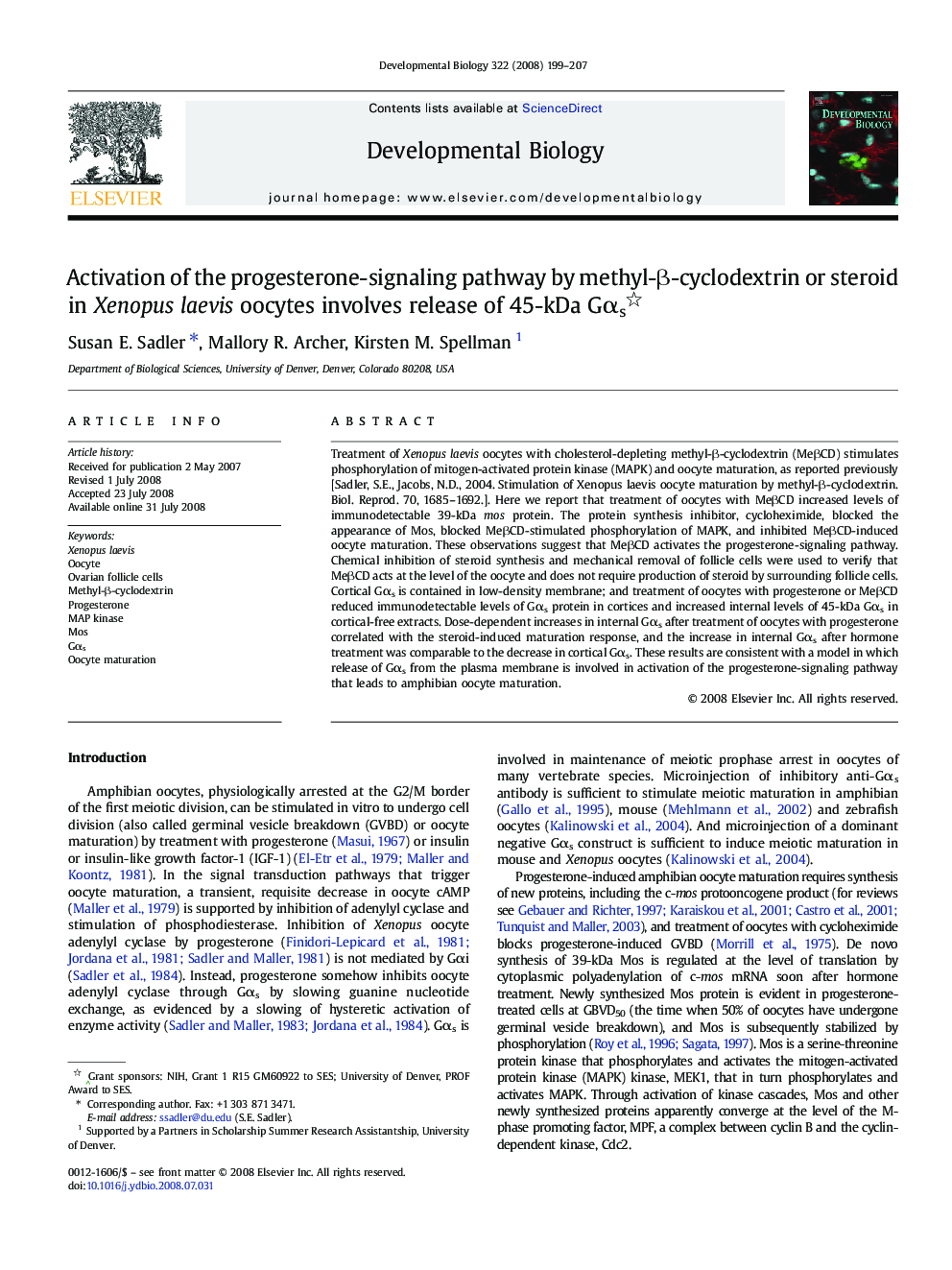| Article ID | Journal | Published Year | Pages | File Type |
|---|---|---|---|---|
| 2174466 | Developmental Biology | 2008 | 9 Pages |
Treatment of Xenopus laevis oocytes with cholesterol-depleting methyl-β-cyclodextrin (MeβCD) stimulates phosphorylation of mitogen-activated protein kinase (MAPK) and oocyte maturation, as reported previously [Sadler, S.E., Jacobs, N.D., 2004. Stimulation of Xenopus laevis oocyte maturation by methyl-β-cyclodextrin. Biol. Reprod. 70, 1685–1692.]. Here we report that treatment of oocytes with MeβCD increased levels of immunodetectable 39-kDa mos protein. The protein synthesis inhibitor, cycloheximide, blocked the appearance of Mos, blocked MeβCD-stimulated phosphorylation of MAPK, and inhibited MeβCD-induced oocyte maturation. These observations suggest that MeβCD activates the progesterone-signaling pathway. Chemical inhibition of steroid synthesis and mechanical removal of follicle cells were used to verify that MeβCD acts at the level of the oocyte and does not require production of steroid by surrounding follicle cells. Cortical Gαs is contained in low-density membrane; and treatment of oocytes with progesterone or MeβCD reduced immunodetectable levels of Gαs protein in cortices and increased internal levels of 45-kDa Gαs in cortical-free extracts. Dose-dependent increases in internal Gαs after treatment of oocytes with progesterone correlated with the steroid-induced maturation response, and the increase in internal Gαs after hormone treatment was comparable to the decrease in cortical Gαs. These results are consistent with a model in which release of Gαs from the plasma membrane is involved in activation of the progesterone-signaling pathway that leads to amphibian oocyte maturation.
